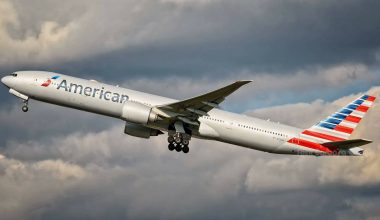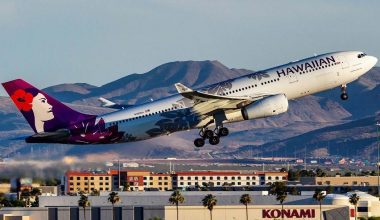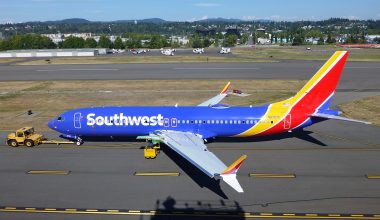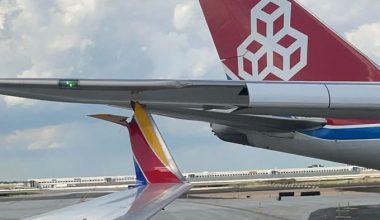In the last few years, Canadian aviation has witnessed an uprise in the ultra-low-cost segment with new players like Swoop Airlines and Lynx Air. But, Flair Airlines remains the leader in Canada’s highly-competitive low-fare market and continues to fast-track its fleet growth and bolster its prominence in cities across Canada, the US, and Mexico. Let’s learn more about Flair Airlines.

Background of Flair Airlines
Flair Airlines is an ultra-low-cost Canadian airline that commenced its operations as a privately owned company on August 19, 2005, under the brand Flair Air’ before entering the ULCC market and rebranding as Flair Airlines in late 2017. Headquartered in Edmonton, Alberta, Flair Airlines has its operating bases in Abbotsford International Airport, Edmonton International Airport, Waterloo Airport, Ottawa Macdonald-Cartier International Airport, and Toronto Pearson International Airport. Flair Airlines secured its position among Canada’s five largest airlines regarding seats offered. It is betting big with the ambitious fleet expansion plan of operating up to 50 aircraft by 2025.
Also Read: Flair Airlines intends to make its fleet to 50 aircraft in five years
In its beginning journey, Flair concentrated on scheduled all-cargo services, charter flights, aircraft, crew, maintenance, and insurance services for other airlines using Boeing 727-200 aircraft. During the first decade of the 21st century, Flair expanded gradually and added Boeing 737-400s to its fleet by replacing 727-200s.
In late 2017, Flair Air joined the Ultra-Low-Cost segment of the Canadian market by purchasing Manitoba-based discount travel company Newleaf and rebranding itself as Flair Airlines. Five years have passed since it entered the ULCC market, and it continues to maintain the lead with no sign of slowing down any time soon.
Destinations served by Flair Airlines.
Flair Airlines operates scheduled passenger and charter services in over 30 cities across Canada, the US, and Mexico. It flies domestically to cities of Calgary, Edmonton, Fort McMurray, Grand Prairie, Abbotsford, Comox, Kelowna, Prince George, Vancouver, Victoria, Winnipeg, Saint John, Deer Lake, Halifax, Kitchener/Waterloo, Ottawa, Toronto, Charlottetown, Montreal, and Saskatoon. Despite having a main operating base at Edmonton International Airport, Toronto Pearson is Flair’s top airport, with more than 16 routes, including once-daily flights on four core airport pairs.
The future Canadian destinations of Flair Airlines include Lethbridge, London, Thunderbay, Windsor, and Regina.

Similarly, it has marked its presence in Mexico’s Cancun International Airport and will serve Licenciado Gustavo Diaz Ordaz International Airport beginning November 3, 2022. With the Mexico-Canada aviation market slowly picking up, Flair Airlines will promote new routes to Mexico as part of its growth strategy.
In addition to pursuing aggressive growth in Canada, Flair Airlines has taken a bold leap into international operations with flights to the US cities of Phoenix, Burbank, Palm Springs, San Francisco, Fort Lauderdale, Orlando, Las Vegas, New York City, and Nashville. By the last quarter of 2022, the carrier will fly to Tucson International Airport and Denver International Airport.
The fleet of Flair Airlines
Flair Airlines has come a long way from a single Boeing 727-200 in its early years to 17 aircraft in the present fleet. The current fleet of Flair Airlines includes 3 Boeing 737-800s and 14 Boeing 737 Max 8 aircraft. The seating capacity of 737-800 and 737 Max 8 are 186 and 189, respectively.
In 2018, Flair Airlines welcomed its leased trio of Boeing 737-800s, and three years later, in January 2021, it announced an order for 13 Boeing 737 Max 8 jets. With the entry of Stephen Jones-Flair’s new president and CEO in October 2020 came major changes for the carrier as it positioned itself for growth with the acquisition of new aircraft and enhanced connectivity to domestic and international routes.
The new CEO Jones clarified that the acquisition of Max 8 aligned well with the carrier’s ‘F50’ goal to grow to 50 aircraft within five years. The first Max aircraft registered C-FLEJ joined Flair’s then-fleet of three 737-800s in May 2021.
In December 2021, Flair Airlines announced its next round of major fleet expansion plans by leasing 14 additional Boeing 737 Max 8 aircraft to complement 13 Max 8s that it ordered earlier in the year. With 17 aircraft, Flair seeks to have 20 in service by summer 2022, 30 aircraft by mid-2023, and 50 aircraft by 2025.

Boeing 737 Max 8 is a fuel-efficient aircraft that has laid the foundation for Flair Airlines to implement the ULCC business model by allowing the carrier to keep fares low and offer even more low-cost travel while connecting dots on existing points the airline’s route map and bolstering its market presence. Max 8 consumes 14% less fuel and emits fewer greenhouse gases than predecessor Boeing 737 Models. The acquisition of more Boeing 737 Max 8 means Flair can pursue a healthy round of expansion from a cost and sustainability aspect and increase its frequencies on existing routes with room for growth aboard in international markets of the US, Mexico, and the Caribbean.
Passenger services and cabin amenities
Flair Airlines makes low-cost travel to, from, and within Canada possible for its customers with sustainably low fares, but the passenger services and cabin amenities are not ‘wow.’ As an ultra-low-cost airline, Flair doesn’t offer an additional baggage allowance option and in-flight catering at the ticket price and charges separately for extra services and amenities. The ticket fee only includes one personal item that can be stored at passengers’ feet.
Flair Airlines is the real deal for passengers traveling without lots of luggage, but extra baggage, pets, or seat selection will add extra costs to the flight bill.
Flair also charges fees for cancellations and flight changes. Changing the flight 7 or more days prior to departure incurs a fee of $29 +tax and fare difference per flight, per passenger. Similarly, the cancellation charge seven or more days before departure costs $39 + tax. Likewise, passengers picking up their favorite spot on the plane must pay fees of $10-20+tax on standard seats, $15-$25 +tax on front seats, $25-45+tax on seats with extra legroom, and $35-$45 +tax on emergency exit rows. There’s also a priority boarding option for $10, excluding tax per flight and passenger.

Regarding cabin amenities, Flair’s aircraft consists of all economy seats in a 3-3 seating configuration. Onboard meals are available on purchase and are not included in the ticket fee. Customers willing to access in-flight entertainment must download Flair in-Flight App, which brings engaging content, games, and movies to their mobile devices. But there’s no Wi-Fi internet access onboard Flair’s aircraft.
Flair ownership saga
After a few months of investigation regarding Flair’s corporate ownership, The Canadian Transportation Agency (CTA) finally ruled that Flair Airlines is a Canadian airline. In March 2022, the CTA determined in its preliminary ruling that Flair Airlines may violate a law under the Canada Transportation Act limiting foreign investors’ control of a Canadian-domiciled operator.

The Canadian aviation policy requires all Canadian-operated airlines to be at least 51% owned by Canadians, and a breach of law can result in losing the operating license. The preliminary review highlighting Miami-based 777 Partners to be the owner of Flair’s 25% share and occupier of three of five Flair’s seats raised concerns over the carrier’s foreign ownership control, eliciting investigation from Canadian authorities. On July 1, the CTA determined that Flair met the standards of Canadian ownership to keep flying. Flair overhauled its board of directors and made amendments to its Unanimous Shareholder Agreement and Promissory Note to meet the letter of the law and keep flying its domestic schedule.
Plans of Flair Airlines
There is cut-throat competition in Canada’s ultra-low-cost market, with multiple budget carriers hoping to cash in on the uptick in travel. With Air Canada and WestJet dominating the Canadian market, ultra-low-cost carriers have only a small presence in most markets. Due to Canada’s high costs, high taxation, vast geography, and low population density, the ultra-low-cost business model hasn’t stuck in Canada the way it does in the US or Europe.
With the recovery of travel demand, Flair Airlines is poised to serve Canadians by offering them affordable airfares amid skyrocketing fuel prices. As the sharp rise in jet fuel prices and inflation is set to affect both airlines and passengers, Flair will be well-suited to take more market share by keeping costs low and offering much cheaper ticket prices to consumers due to its fuel-efficient aircraft fleet. It envisages providing affordable fares while keeping its costs low to grab an adequate portion of domestic and international markets.
Flair Airlines often faces criticism on service reliability concerns where passengers complain about flight cancellations and lack of prompt flight rebookings. Flair CEO Jones says that Flair Airlines is investing in improving customer service by accelerating the hiring process to increase the customer service team size by four times and driving automation technology to speed up processing times. Flair Airlines has much to do to improve customer experience and stand out against emerging budget carriers like Swoop and Lynx.






